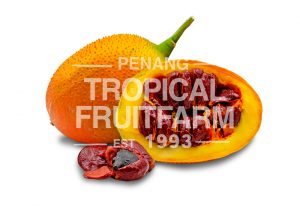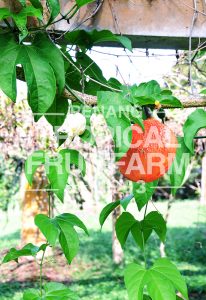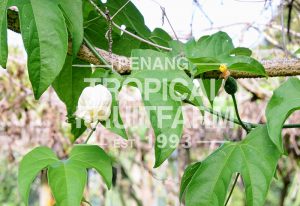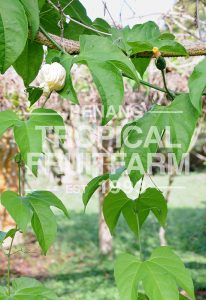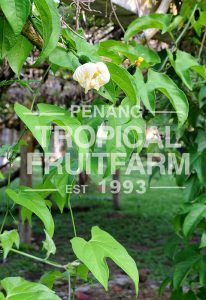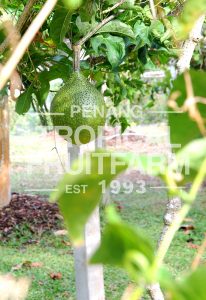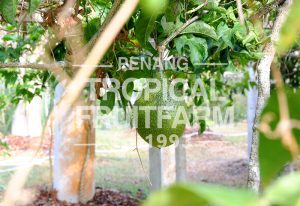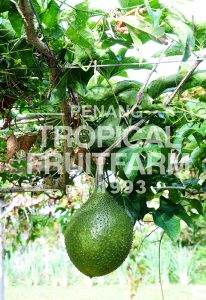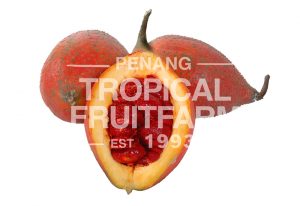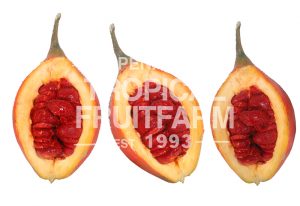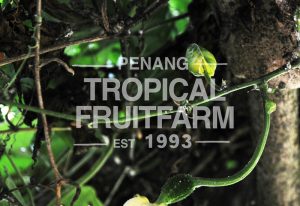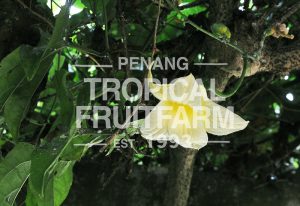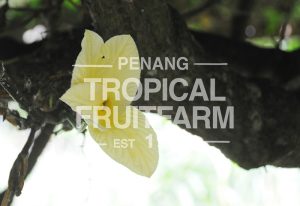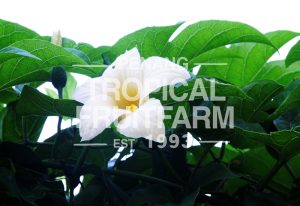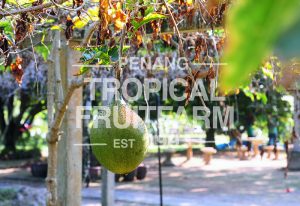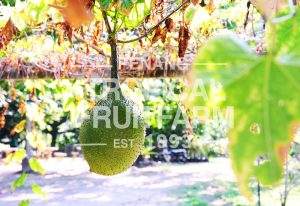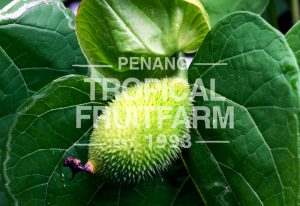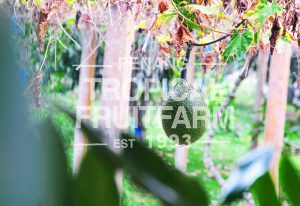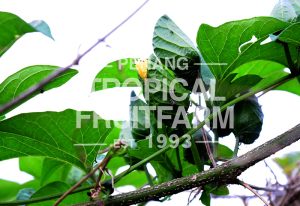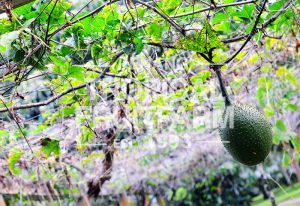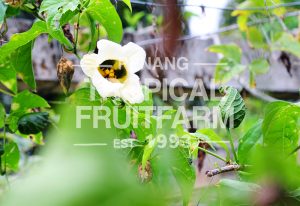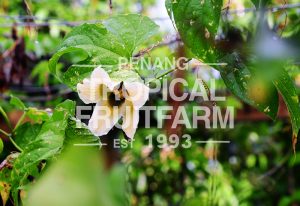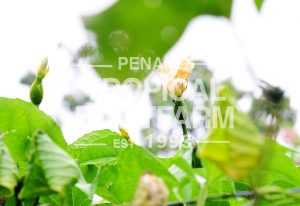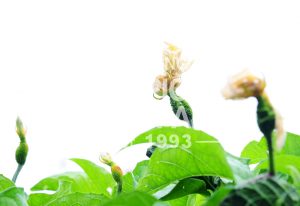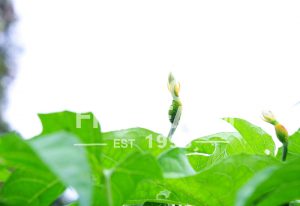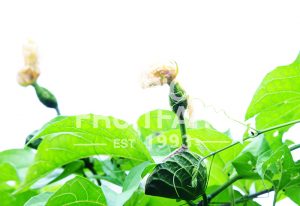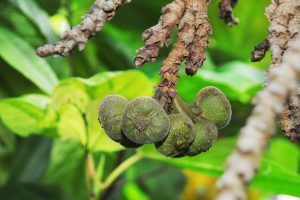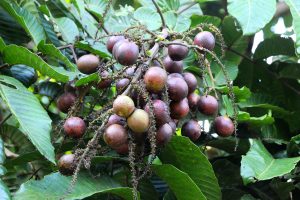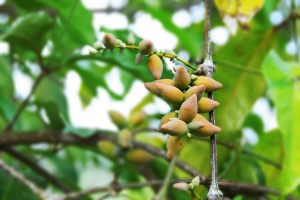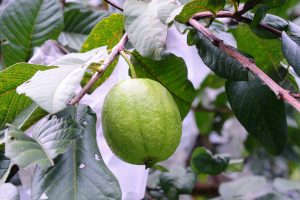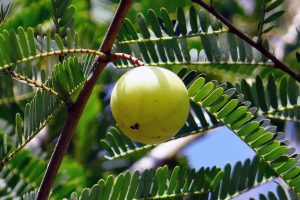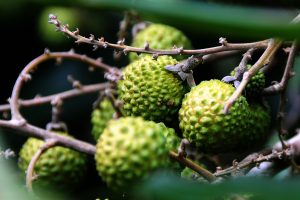| Origin | Gac fruit is a Southeast Asian fruit found throughout the region from Southern China to Northeastern Australia, including Thailand, Laos, Myanmar, Cambodia and Vietnam. |
| Description | Gac fruit is a gourd shaped fruit about the size of a cantaloupe that grows on a perennial vine and is often referred to as the “fruit from heaven”. |
| Growth Habitat | The tree grows on dioecious vines and is usually collected from fence climbers or from wild plants. It is frequently cultivated in home gardens and is found on lattices and among the branches of trees. The minimum temperature it tolerates is 15C/60F so it needs protection from cool nighttime temperatures. |
| Foliage | Gac fruit leaves are smooth, 3-lobed with pointed tips and heart-shaped bases, 8-18cm long. |
| Flowers | The flowers are white or light yellow, with male and female born on separate plants. Male flowers occur in the leaf axils on peduncles. Female flowers are 2.5 to 5cm, born on peduncles, white or pale yellow, oblong to oblong-ovate, with a large dark blotch at the base. |
| Fruits | The fruit itself becomes a dark orange color upon ripening, and is typically round or oblong, maturing to a size of about 13cm in length and 10cm in diameter. Its exterior skin is covered in small spines while its dark red interior consist of clusters of fleshy pulp and seeds. |
| Harvest | Gac fruit is usually picked at maturity, when it is bright red and the seeds are hardened. It takes approximately 5 months after flowering before the ripe fruits can be harvest. |
| Soil | It will climb on lattices in any warm, sunny spot with rich, well drained soil. |
| Propagation | The plant can be cultivated from seeds or root tubers and rooted vine cuttings can also be used for propagation. |
| Nutritional Properties | Gac fruit contains: - 76 times the lycopene of a tomato. - 40 more times Vitamin C than an orange. - 20 times the beta carotene as carrots. - Full of antioxidants, specifically carotenoids. |
| Health Benefits | - Defends against cellular damage - Protects against the effects of aging - Supports healthy blood flow - Anti-inflammatory - Destroys cancer cells - Decreases prostate cancer - Boosts immune system - Fights bacteria and viruses |
| Commercial Uses | In northern Vietnam, Gac fruits are mainly used in making a rice dish called xoi gac in which the aril and seeds of the fruit are cooked in glutinous rice. The seed membranes are used to aid in the relief of dry eyes, as well as to promote healthy vision. Immature fruits, young leaves and flowers are used as vegetables. Its roots froth in water and can be used as soap. Gac is also used for its medicinal and nutritional properties. Natives use Gac oil to treat dry eyes, night blindness, wounds, skin infections, burns and to improve children’s growth. |
| Food Suggestion | Xoi Gac Red Sticky Rice Ingredients: 2-3 pounds glutinous rice (may vary depending how much gac you have) Gac fruit 1 tablespoon salt 2 tablespoon red wine 1 can coconut milk 2 cups sugar Direction: Soak the glutinous rice overnight and when ready to make the xoi, drain and allow to dry. Use gloves because the seeds can stain hands. Cut open the gac and pick out the seeds and place in a mixing bowl. Add about 1 tablespoon of red wine and using your hands rub the red coating off the seeds as much as possible. Add this to the rice along with the salt. Mix well to fully coat all the grains of glutinous rice in beautiful gac red. Steam the rice until almost fully cooked – about 15 mins or so. Then add sugar and coconut milk – mix and cook for another 5 mins. You may have to cook in batches if your steamer can’t hold all the rice all at once. The rice should be semi sweet, but not too sweet – but adjust to your liking. |

